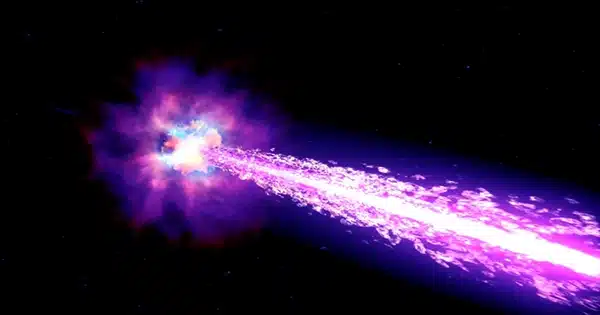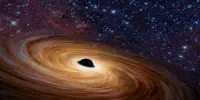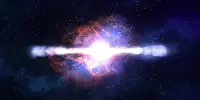The cosmos constantly shocks us, from peculiar stars to alien worlds and other strange objects that defy understanding. Astronomers have identified a “heartbreak” star system in which three-times-the-height-of-the-Sun tidal waves rise and smash on the surface of a big star due to the motions of a smaller partner star.
The star system in question is known as MACHO 80.7443.1718, and it belongs to a class of stars known as “heartbeat” stars because of its regular pulsation. This, however, is the most extreme known case, with its brightness varying by around 20% each time – 200 times more than most. As a result, it’s been dubbed a “heartbreak star” instead.
The Harvard & Smithsonian Center for Astrophysics studied why this system pulses so wildly in the latest study. The researchers developed a computer model of the system’s two stars and simulated their interactions as they orbited one other.

The primary star is enormous, measuring 24 times broader and 35 times more massive than the Sun. Every 33 days or so, the smaller star’s gravitational attraction kicks up stellar material on the bigger star, causing waves to build and peak before shattering like waves on an Earthly beach.
These tides, though, are a little greater than anything else around here, reaching heights of around 2.7 million miles (4.3 million km), or three Suns stacked on top of each other.
“Each crash of the star’s towering tidal waves releases enough energy to disintegrate our entire planet several hundred times over,” adds co-author Morgan MacLeod. “These are some really big waves.”
This isn’t the only effect. This monthly gravitational dance expands the larger star into an egg shape while flinging stellar debris into the spinning atmosphere. These factors are responsible for the dramatic changes in brightness seen from Earth.
MACHO 80.7443.1718 is one of roughly 20 known heartbeat star systems with abnormally significant brightness swings, so additional observations may discover other heartbreakers.
“This heartbreak star could just be the first in a growing class of astronomical objects,” MacLeod added. “We’re already planning another search for more heartbreak stars, looking for the glowing atmospheres flung off by their breaking waves.”














